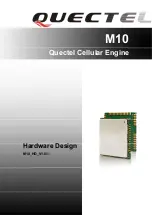
10
LPW / LPWs / LPWX enGIne oPeRAtoRs' HAnDBooK
that any sediment stirred up has time
to settle before the engine is used
again, and the risk of condensation
contaminating the fuel is minimised. If
using a can, avoid tipping out the last
few drops.
• Funnels are very diffi cult to keep
clean in dusty conditions. Wash them
before and after use and wrap them up
when not required, or fi ll the tank direct
from a small-mouthed screw-capped
can.
• The fuel injection equipment is
manufactured to very accurate limits
and the smallest particle of dirt will
destroy its effi ciency.
CAUtIon
keep the fuel free from water and
contaminants.
1.5 PReCAUtIons WItH FILteRs
AnD eLeMents
• Used fi lters and elements contain
some of the fi ltered liquid and should be
handled and disposed of with care.
• After handling new or used elements,
wash your hands thoroughly.
WARnInG
do not allow fuel or new or used
lubricating oil to come into contact
with unprotected skin. It is dangerous
and could cause skin irritation.
WARnInG
Take careful precautions with fi lters
and elements. the materials used in
the manufacture and treatment of
some types may cause irritation or
discomfort if they come into contact
with the eyes or mouth, and they
may give off toxic gases if burnt.
1.6 PReCAUtIons WItH oIL
seALs
Some engines may be fi tted with seals
or 'O' rings manufactured from Viton
or a similar material. When these
substances are exposed to abnormally
high temperatures, in excess of 400°C
(752°F), an extremely corrosive acid is
produced.
WARnInG
IF AN OIL SEAL CONtAINING
VItON (Or SIMILAr MAtErIAL)
dEGENErAtES, It PrOdUCES
AN EXtrEMELY COrrOSIVE ACId
tHAt CANNOt BE rEMOVEd FrOM
tHE SkIN. IF YOU SEE SIGNS
OF dECOMPOSItION, Or ArE
IN dOUBt, WEAr dISPOSABLE
HEAVY dUtY GLOVES.
• If in any doubt about an oil seal,
always wear disposable heavy duty
gloves.
1.7 PReCAUtIons WItH
BAtteRIes
Batteries contain hazardous sulphuric
acid. Great care therefore needs to be
taken when using them.
• Do not smoke near batteries and
keep sparks and fl ames away from
them. Do not work near to heaters or
other fi re hazards.
• Switch off the battery charger
before connecting or disconnecting
the charger leads. Disconnect the
battery negative (earth) lead fi rst and
reconnect last.
• Keep the top of the battery well
ventilated during charging.
• Never 'fl ash' connections.
• Never use a damaged battery.
• Do not attempt to charge a frozen
battery; it may explode. Instead, warm
the battery to 16°C (60°F).











































